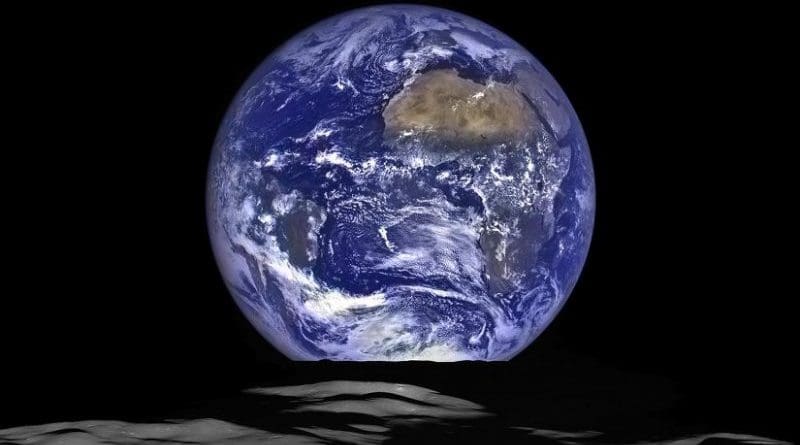Where Is The World Now After Paris Climate Conference?
There was much excitement and euphoria when the draft agreement was signed in Paris climate conference in December 2015, when the countries agreed to limit global temperature rise to well below 2 degree celsius, while pursuing efforts to keep temperature rise to 1.5 degree celsius.This was followed by another event on 22nd April, when 175 countries signed the Paris Agreement at a ceremony in New York
The agreement enter into force 30 days after atleast 55 countries, accounting for 55 per cent of global greenhouse gas emissions, deposit their instruments of ratification or acceptance with the Secretary General during the special event on 21st September organized by United Nations.
The question is as to whether the Paris Agreement coming into force will really make any significant difference, since there are many underlying issues that have not been addressed in the Paris Climate Agreement.
Paris Agreement may be the best deal that could have been struck, given the limits of the political and economic environment, but it does not mean that it has done what is necessary to protect the life support systems of the actual environment.
Alarming trend and need for urgency
There is alarming trend in increase of global warming in recent time.
Between 1880 and 2010, the mean temperature in the world increased by one degree celsius and between 2010 and 2015, it was reported to have increased further by 0.15 degree celsius
It was reported that 2014 was the warmest year across the globe since records began in 1880.
Now, United Nations Weather Agency has said that in the current year , August equaled July as the hottest month in recent times. It further reported that extraordinary temperatures are “said to become the new norm”. The United Nations Meteorological Organisation also forecasted that 2016 will prove to be the hottest year on Earth over 137 years of record keeping.
Going by current trends in global warming, the earth would have become warmer in 2018 by 0.1 degree celsius compared to 2015 levels, moving closer to the target of 1.5 degree celsius warming leves.
There is little time to act.
Paris climate agreement fall far short of need
There was skepticism from some quarters even when the draft agreement on climate change was signed in Paris , since many people thought that the conference agreed on the need to aggressively address the climate change issues but failed to detail with clarity as to how it would be done.
Aggregate pledges to reduce greenhouse emissions made by the nation states of the world fell far short of what is needed to begin to address the looming catastrophic climate change.
Paris Agreement failed to acknowledge the need to decarbonize the world economy and made no reference to fossil fuels such as crude oil, coal in the agreement.
Technologies and actions have not been prescribed to halt growth of climate destructive industries.
While many countries have signed the agreement , the ground reality is that the interest and responsibilities between the countries diverge widely, ranging from the post industrial economies of the global north to industrializing nations such as China and India to the most vulnerable nations already facing climate change disruptions, such as Kiribati, Tuvalu ad Vanuatu.
Enforcement of the agreement is non adversarial and non punitive , which implies that actions by countries depend on peer pressure.There are no legal enforcement mechanisms for non compliance. Targets remain voluntary and the required actions are unspecified and appear daunting.
What progress in the recent months?
Now that several months have gone after the signing of the draft agreement in Paris , one gets an impression that the world is still not moving with the sense of urgency that the challenge of global warming needs. There is no sign of meaningful and purposive dialogue between the nations about the lacuna and gaps in the Paris climate conference and the way to move forward to overcome the limitations of the Paris Climate Agreement.
The ratification of the agreement entering into force 30 days after 55 countries deposit their instrumentations of ratification will not, by itself, make big difference when the basic issues remain unresolved.
Is Paris Agreement facing uncertainty?
Economic impact of large scale reduction of reliance on fossil fuels is untested and not clear. This aspect is yet to be discussed and studied in comprehensive manner.
There are political risks also.
Currently, in USA, the Republican candidate for 2016 Presidential election opposes significant policy measures to mitigate climate change and has distanced himself from mainstream scientific views. If Donald Trump were to become the US President, will USA ,which is the largest consumer of energy in the world, honour the Paris Climate Agreement?
United Nations Secretary General has to ask the Presidential candidates in USA to state their views clearly.
What needs to be done now?
The real work on decisions made during Paris climate conference, has to begin now and in earnest globally by all countries.
Agreements in principle need to be translated into action by individual member countries. Developed nations need to determine their projected peak emissions level plan with urgency. This requires more specific and aggressive policies in a massive expansion of clean energy investment and industry needs to plan to shift away from fossil fuels.
While developing nations are allowed more flexibility, due to rising population and pollution level due to economic growth, there is need to make a careful assessment of total cost of polluting with fossil fuels and the cleanup thereafter and hence decide their fossil fuel based energy profile carefully.

